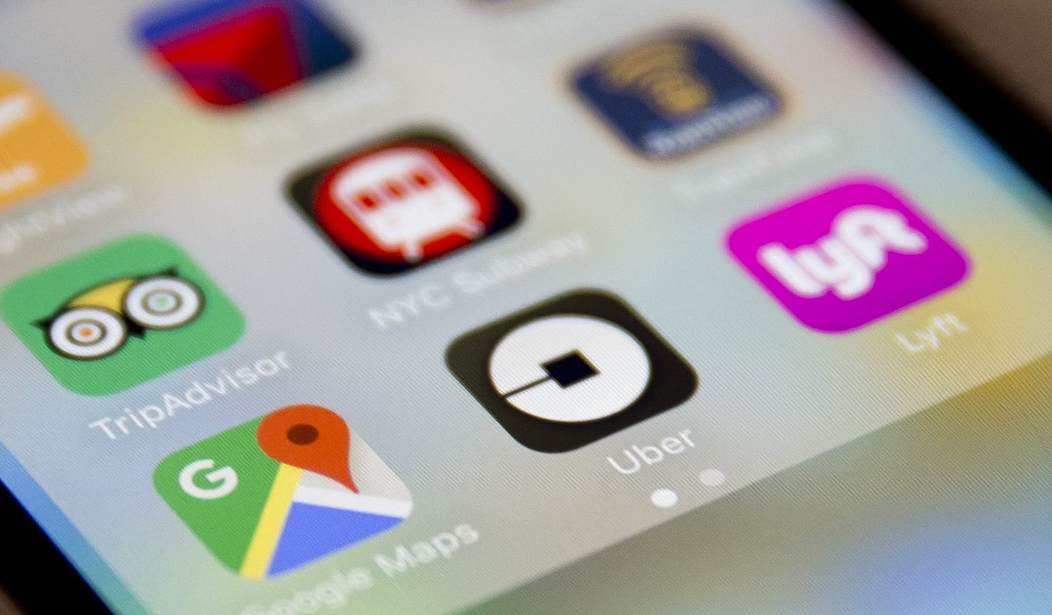It was 10 years ago this month that Apple introduced the iPhone, one of the most successful and consequential consumer products of the past 50 years. It’s rare that any new electronic product sells a million units in a year, but the iPhone has sold more than one billion since it was introduced. Its success has partially been the result of the convergence of wireless technology, microelectronics, and the Internet. But it was Steve Jobs and his team’s imagination that made it all possible.
It’s easy to forget how bad phones were just a decade ago. The cellular carriers were controlling the hardware, charging us for sending pictures, providing us with directions, and making it expensive to text and call. The carriers treated us as captive customers and added all sorts of fees. It was Apple that imagined something quite different, and together with AT&T, unleashed a product that has impacted all of us. And even if you’re an Android user, the iPhone was its inspiration. It came about after Google’s CEO, Eric Schmidt, saw the concept as an Apple board member, left the board, and began the Android development. Perhaps the one thing that’s changed the least has been the carriers continuing to impose new charges and now supporting laws that let them spy on what we do.
Here are some of the iPhone’s biggest impacts
Connected us to the Internet
The iPhone was one of the first devices that fit in our pocket and let us easily connect to the Internet everywhere we went. One of the keys to this was shedding the physical keyboard to allow a large display. While most thought that the on-screen keyboard was a serious compromise, it turned out to be good enough, thanks to some software tricks in its design. Once connected, it opened to us news, email, messaging, videos and music that eventually made voice secondary.
Created success for several high-tech companies, while damaging or destroying others
The iPhone turned Apple into the world’s most valuable company, and propelled the growth of Google and Facebook through mobile advertising. Apple sales went from $19 billion in 2006 to $215 billion this past year, with iPhone sales representing more than 60% of the sales. The iPhone provided one of the biggest platforms for navigation Google maps
But the iPhone spelled bad news for other companies that never appreciated its impact. Microsoft’s CEO, Steve Ballmer, said in reaction to the iPhone announcement in a 2007 interview with USA Today, “There’s no chance that the iPhone is going to get any significant market share. No chance. It’s a $500 subsidized item. They may make a lot of money. But if you actually take a look at the 1.3 billion phones that get sold, I’d prefer to have our software in 60 percent or 70 percent or 80 percent of them, than I would to have 2 percent or 3 percent, which is what Apple might get.
And from the co-CEO of RIM, the company that made Blackberries, “As nice as the Apple iPhone is, it poses a real challenge to its users. Try typing a web key on a touchscreen on an Apple iPhone, that’s a real challenge. You cannot see what you type,” saidJim Balsillie in November 2007.
Then there was Nokia and Motorola, which was once the largest cellphone manufacturers in the world that no longer exist. (Motorola in now owned by Lenovo, the Chinese PC company).
Pummeled the camera business but broadened photography
Camera sales have continued to decline as smartphones improve their on-board cameras. One of the drivers has been the ability to capture an image and instantly share it with others around the world. It was doing what Polaroid had done decades earlier, but much more effectively. The Camera & Imaging Products Association (CIPA) released its 2016 report detailing yearly trends in camera shipments and showed a 32% drop in digital camera sales just last year alone, as reported by dpreview.com. But thanks to smartphone cameras, image taking is growing faster than ever. 1.2 trillion digital photos will be taken this year compared to 400 billion in 2011, with 85 percent of them taken on smartphones, up from 50% in 2011.
iPhone degrades music quality
As with the iPod, Apple chose convenience over quality and uses highly compressed music on the iPhone. That’s prevented millions from experiencing high quality audio, with many not even knowing such music exists. iPhone music files have just 5-10% of the data of the original recordings. Lower music quality is an anomaly in the digital world with displays and images getting better and better, while quality audio is all but ignored.
The growth of Apps
Apple launched its App Store a year after the iPhone, much to Steve Job’s objections. He was reluctant to give up control to outside developers. But it was the App Store that unleashed the imagination of developers to provide solutions for things we never knew we needed. At launch, the App Store had 500 apps, and now there are over 5 million apps available for Android and Apple phones according to Statista.
Isolation and obsession
iPhones and Android phones have become the one device more of us carry than anything else. We’re constantly glued to it day and night, with several serious consequences. We are more isolated, spend more time texting than in face-to-face conversations, and more easily become distracted when driving. In fact, Google product manager Tristan Harris explains how Silicon Valley programmers are engineering your phone and its apps to make us check them more and more.
What’s next?
At some point it’s possible to imagine that the smartphone will be replaced by wearable technology, including special glasses and earpieces that allow us to use voice and eye movement to do much what we do on the phone today. We’ll speak to dial, send a text, or request information that will appear on our special glasses. Glasses will superimpose digital images and text on top of our view of the world to bring new capabilities using augmented reality. I was imagining how well that would work while wandering through a wine store last week. Instead of looking up a wine’s rating and reviews, in the future I could just look at the bottle and I’d see the information superimposed right next to it.
But for now, we’ll be using our phones for years to come. In celebration of its 10th anniversary, Apple will be introduce all new iPhone models in September. It’s rumored to resemble a Samsung S8, with its sleek smooth edge to edge display, and with Apple’s new iOS11. If you want to try out the iOS11, it’s now available as a public beta here. Even after ten years the iPhone continues to add major new capabilities and attract new customers. It truly deserves all the recognition it is receiving.








Join the conversation as a VIP Member